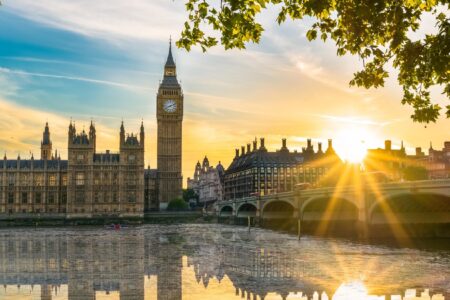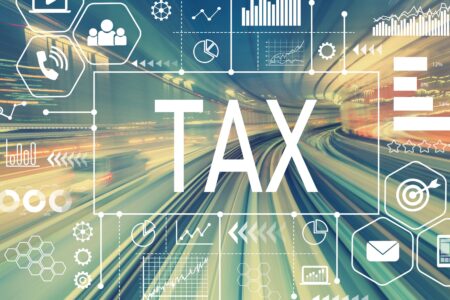Despite speculation and a stark forecast from the Office for Budget Responsibility (OBR), the Chancellor made no announcements about tax increases in his 2020 Spending Review Statement. His main focus was spending to boost the economy, support jobs and businesses, and invest in infrastructure.
25 November 2020
Coinciding with the Chancellor's statement, the Office for Budget Responsibility (OBR) reported that the UK economy is expected to shrink by 11.3% in 2020 – the largest annual fall since the Great Frost of 1709 – and total borrowing in 2020/21 will reach an estimated £394 billion. This is, of course, due to the pandemic support measures and includes additional public services spending of an extra £38 billion over the rest of 2020/21. Total spending on the response to Covid-19 this year will come to over £280 billion.
Looking ahead, Mr Sunak outlined a raft of fresh support spending, including capital investment in 2021/22 of £100 billion and a new employment support fund of £2.9 billion over three years for the long-term unemployed.
Key highlights included:
- No tax announcements, although the Chancellor noted that “we have a responsibility … to return to a sustainable fiscal position”.
- Government borrowing projected to be £394 billion in 2020/21 before stabilising at around £100 billion from 2023/24 onwards. Total debt to remain over 100% of GDP.
- A new National Infrastructure Strategy based around economic recovery, levelling up and meeting the UK’s net zero emissions target by 2050. It will be supported by a new infrastructure bank based in the north of England, which is to start work in spring 2021. It will work with private sector to finance major new UK investment projects.
- An increase to the National Living Wage by 2.2% from £8.72 an hour to £8.91 an hour from April 2021. The minimum age at which it now applies is 23 (down from 25).
- Overseas aid to be cut from 0.7% of GDP to 0.5% in 2021.
- The business rates multiplier will be frozen in 2021/22, saving businesses in England £575 million over the next five years and the government is considering business rates reliefs.
- Public sector pay to be frozen for a year, other than for NHS employees and those earning less than £24,000 a year.
The OBR also stated that “a fiscal adjustment of £27 billion” will be needed as a minimum in the medium term.
Background
Late November should have seen the Chancellor announce his Autumn Budget and a Comprehensive Spending Review covering the next three financial years. Like many other plans, the uncertainty created by the pandemic has put both on hold. In their place was a ‘Financial Statement’, primarily addressing a one-year Spending Review, with a nod to the red ink contained in the Office for Budget Responsibility’s (OBR) Economic and Fiscal Outlook.
The last financial projections from the OBR were published a little over three months ago, so neither counted the cost of the various iterations of the Chancellor’s Winter Economy Plan nor allowed for the second period of lockdown. In August, the OBR’s central estimate was that the government would end up borrowing £372 billion in 2020/21, nearly seven times its March Budget figure of £54.8 billion. Data released last week showed borrowing in the first seven months of the financial year had already reached £214.9 billion. The OBR now expects a figure of just short of £400 billion in its central case for 2020/21.
Rishi Sunak presented his first Budget on 11 March, the day that the World Health Organisation declared Covid-19 to be a pandemic. At the time, the Chancellor described his Budget’s coronavirus initiatives as being “temporary, timely and targeted”. Their cost was put at £12 billion. Twelve days later the first lockdown began.
Since those early spring days, Covid-19 has dominated the government’s agenda and seriously weakened its financial position. Mr Sunak added to his Budget measures three times before March was out and has since further enhanced and extended support. By mid-October, claims made under HM Treasury’s two headline schemes, the Coronavirus Job Retention Scheme (CJRS) and the Self-Employment Income Support Scheme (SEISS), had amounted to over £55 billion. The schemes are not set to end until March 2021 and April 2021, respectively.
The economic consensus is that for now the financial focus is on survival, but the Chancellor has frequently indicated that a day of reckoning is on the horizon.
'The economic emergency has only just begun'
“Our health emergency is not yet over. And our economic emergency has only just begun” said Chancellor as he started his speech. However, anyone expecting Mr Sunak to indicate how he intended to balance the government’s books in his latest statement would have been disappointed. He did acknowledge that the pandemic would lead to long-term scarring, with the economy around 3% smaller in 2025 than expected at the time of his March Budget.
This statement was always intended to present the 2021/22 Spending Review – shortened from the originally planned three-year period – and that is what it proved to be, with a heavy emphasis on spending.
Spending focus
Businesses, jobs and infrastructure
There will be £100 billion of capital spending in 2021/22 aimed at kickstarting growth and supporting jobs – £27 billion more in real terms than last year. On top of this, £2.9 billion will fund a new three-year UK-wide programme to provide support to help over 1 million long-term unemployed people.
The National Living Wage (NLW) will increase by 19p from next April to £8.91 an hour, in line with the recommendation from the Low Pay Commission. The age at which the NLW will start to apply will be cut from 25 to 23. The National Minimum Wage rates will also increase.
The business rates multiplier will be frozen in 2021/22, saving businesses in England £575 million over the next five years. The government is also considering business rates reliefs.
As part of a new National Infrastructure Strategy, a UK infrastructure bank will be created “to catalyse private investment in projects across the UK”. The new bank will be headquartered in the north of England and will start work next spring.
Public services, healthcare and social care
There is an extra £38 billion of support for public services in this financial year, bringing the total spending on the Covid-19 response in 2020/21 to over £280 billion.
In 2021/22 there will be a further £55 billion of support for the response to Covid-19 including provision of PPE, the test-and trace system and the roll out of vaccines.
A new Levelling Up Fund was announced, worth £4 billion. It will be managed jointly between the Treasury, the Department for Transport and the Ministry of Housing, Communities and Local Government. Any local area will be able to bid directly to fund local projects.
Core spending power for local authorities will rise by an estimated 4.5% in cash terms in 2021/22. Local authorities will be able to increase their council tax bills by 2% without needing to hold a referendum and social care authorities will be able to charge an additional 3% precept to help fund pressures in social care. There will be £254 million of additional funding to help end rough sleeping.
Public sector pay will be constrained in 2021/22. NHS workers will receive an increase. So too will the 2.1 million public sector workers earning less than £24,000 a year, who will be guaranteed a pay increase of at least £250. Outside these two groups there will be no pay rise.
Spending on overseas aid will be cut from 0.7% of GDP to 0.5% in 2021/22. The cut will be restored ”when the fiscal situation allows”.
OBR's Economic and Fiscal Outlook
The Office for Budget Responsibility's (OBR) latest Economic and Fiscal Outlook effectively sets the framework for the challenge facing the Chancellor in the years ahead. The most immediately striking item is the forecast for borrowing in this financial year, which has now risen to £393.5 billion, based on the OBR’s central forecast. The downside scenario figure puts borrowing at £440 billion.
Underlying the OBR’s picture of the future path of the UK economy are a range of assumptions and projections, some of which Mr Sunak mentioned in his speech. On the OBR’s central scenario:
- The UK economy is forecast to contract by 11.3% in 2020 without returning to its 2019 level until the final quarter of 2022.
- After 5.5% economic growth in 2021 and 6.6% in the following year, growth tails off to around 1.8% in 2024 and 2025.
- Unemployment will peak at 7.5% in the second quarter of 2021 and then will fall to 4.4% by 2025.
- Borrowing will drop dramatically in 2021/22. This is the result of higher taxes in a recovering economy and an end to many of the temporary financial support measures, such as the CJRS.
- From 2022/23 onwards, borrowing will settle at around £42 billion higher than the OBR had forecast in March.
Total public sector debt, i.e. accumulated government borrowing, is projected to rise to 105.2% of GDP in 2020/21 from just 85.2% a year ago. In this case debt will rise while GDP is expected to contract. From 2021/22 the debt/GDP ratio will peak at 109.4% in 2023/24 before falling for largely technical reasons. The last time UK government borrowing exceeded 100% of GDP was in 1960/61.

Potential tax rises
The OBR hasn’t assumed any tax increases in coming years, other than those already implicitly built into the system, e.g. frozen tax thresholds. Thus, income tax receipts are projected to be £203.6 billion in 2021/22 against £217.4 billion originally forecast in March. Forecast overall 2021/22 government income has dropped by 7% between the March and November assessments, while the corresponding increase in total government expenditure is 3.5%.
In his speech the Chancellor said “…we have a responsibility, once the economy recovers, to return to a sustainable fiscal position”. The nearest that the OBR comes to considering the need for tax rises in its report is to note that “…even on the loosest conventional definition of balancing the books, a fiscal adjustment of £27 billion (1% of GDP) would be required to match day-to-day spending to receipts by the end of the five-year forecast period”.
The £42 billion increase in the OBR’s estimate of the longer-term deficit is in line with projections from the Institute for Fiscal Studies and Resolution Foundation. Earlier this year both these organisations suggested that around an extra £40 billion a year in additional tax would be required over the medium term. That would mean raising tax receipts by about 2% of GDP from the current level of around 38%. Such an increase would require a range of measures across the full tax spectrum.
Can we help?
If you need guidance through any of the provisions announced by the Chancellor in his 2020 Spending Review, please get in touch with your Shipleys contact or one of our team of specialists shown on this page.
This summary is based on the Chancellor’s Spending Review Statement on 25 November 2020, supplemented by information from official publications. It reflects our understanding of proposed changes, but is not a complete and definitive guide. The Government's proposals may be amended.
Specific advice should therefore be obtained before taking action, or refraining from taking action, on the basis of this information.
© 2020 Shipleys LLP




















